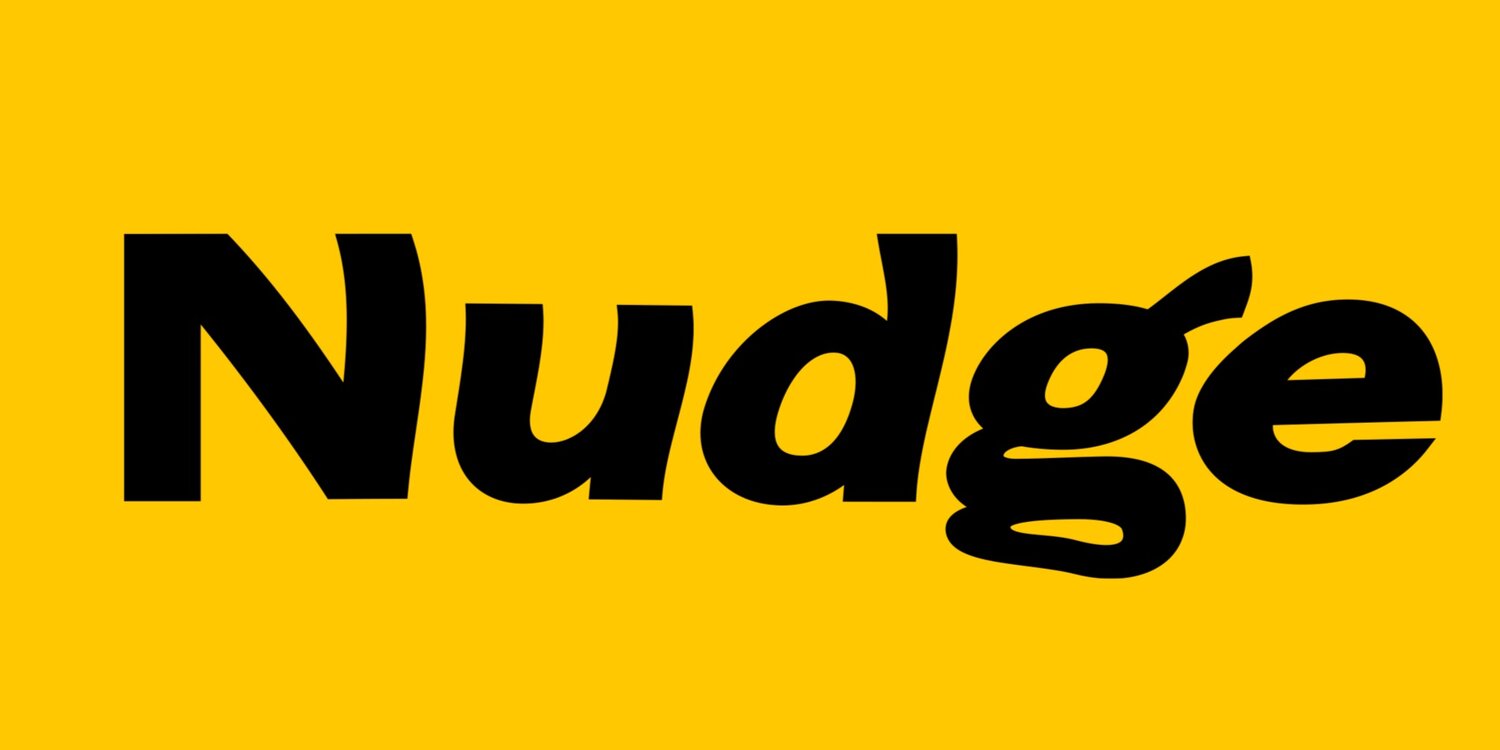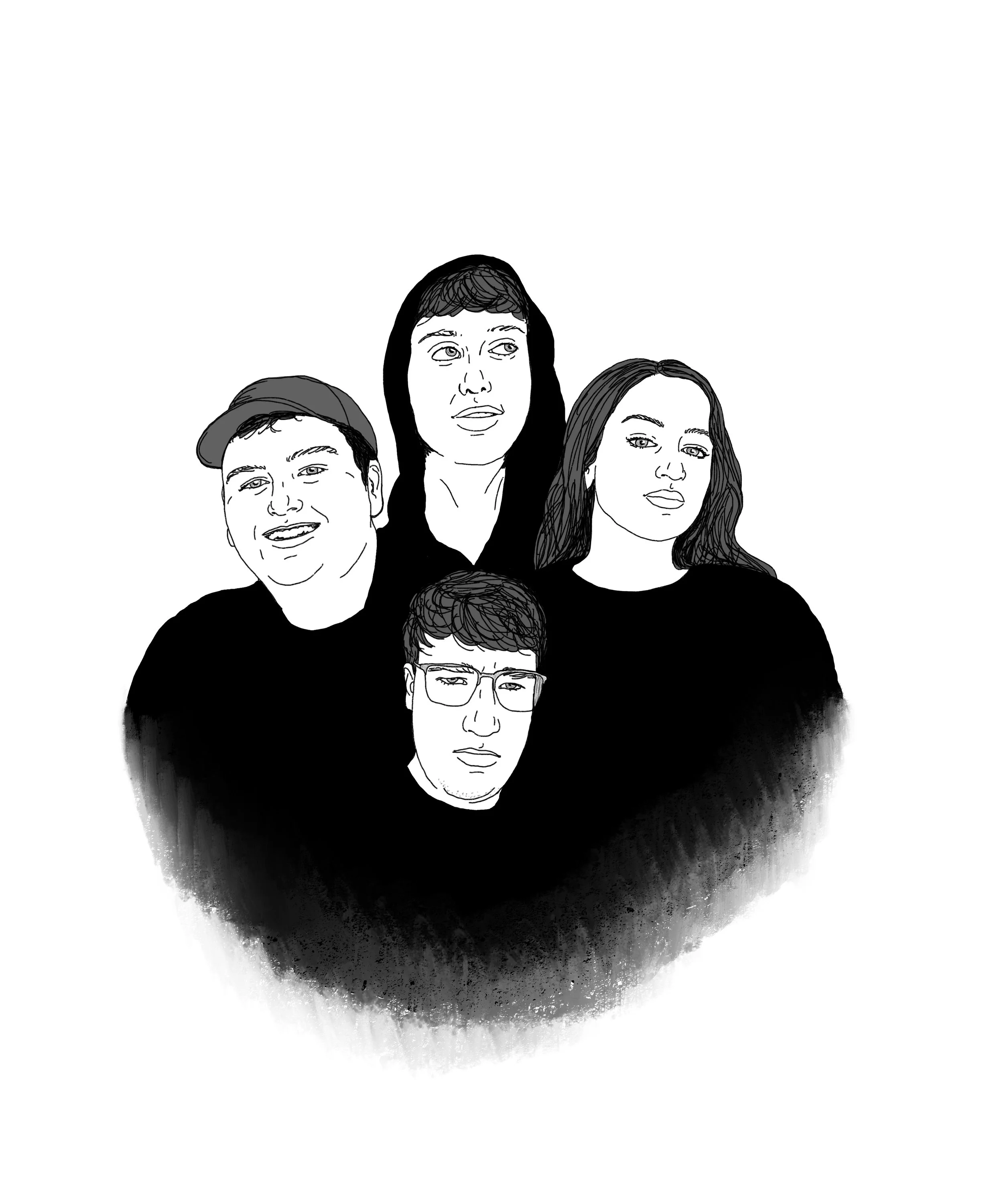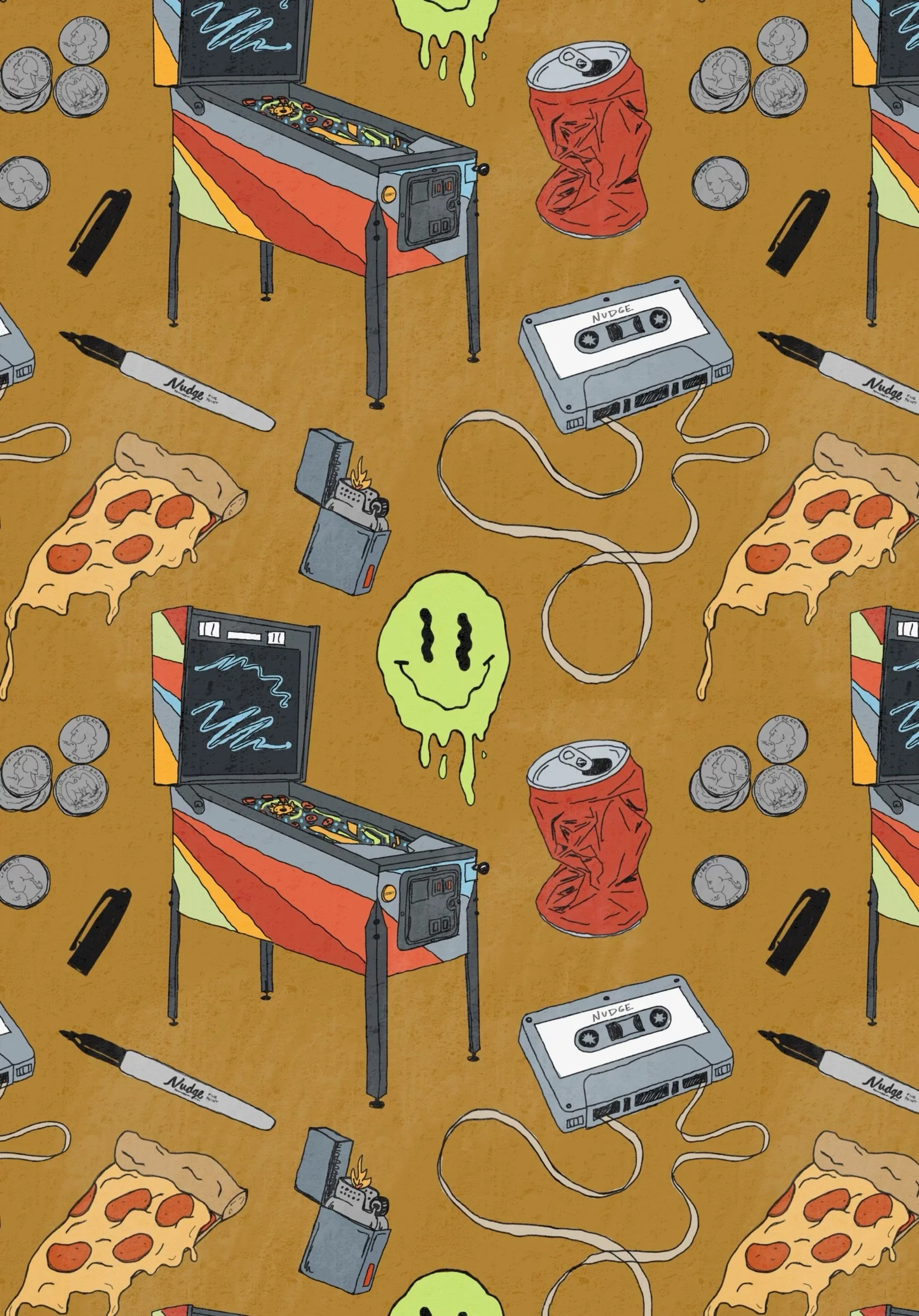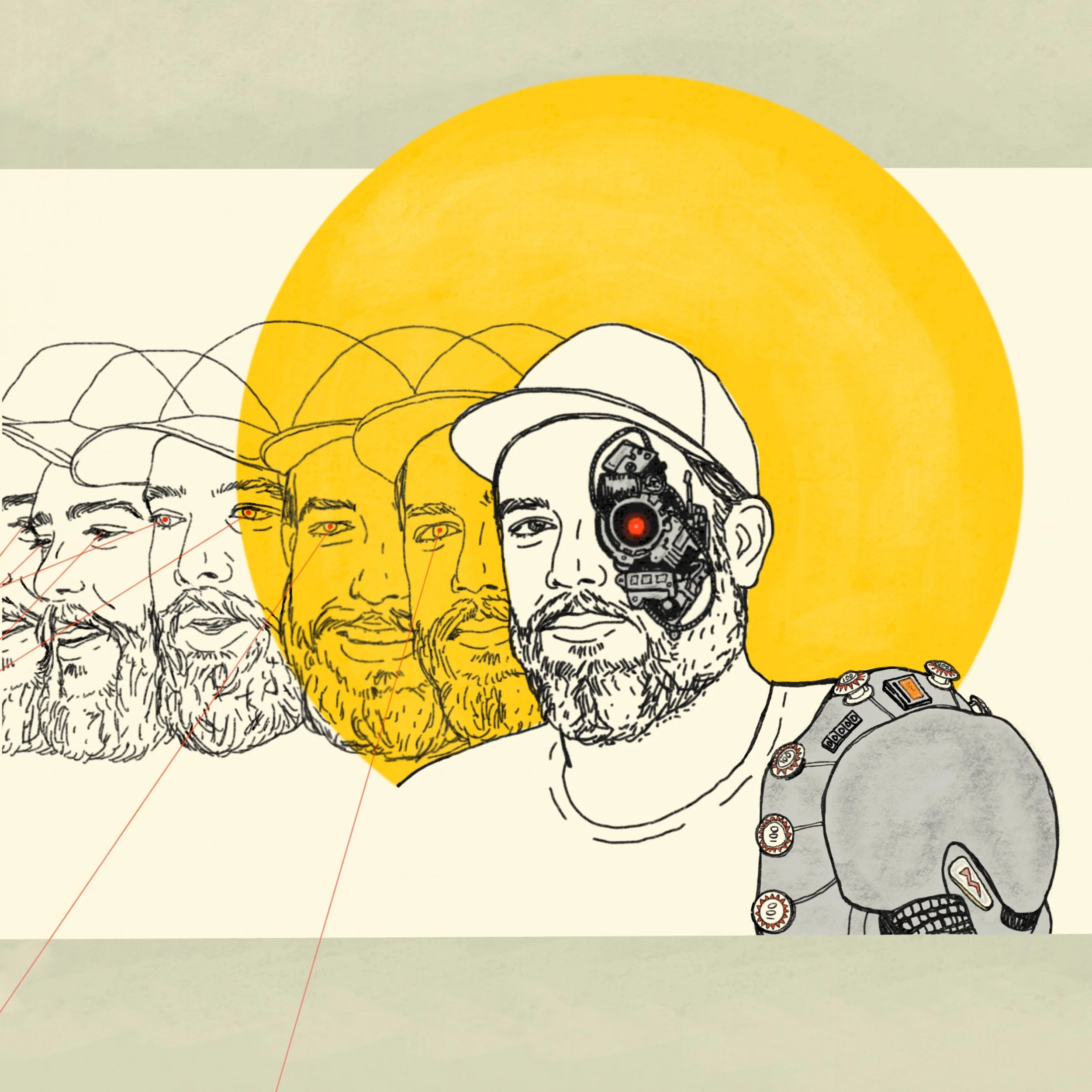We Read the Best Argument For AI Art in Pinball (It’s Still Wrong)
Ian Harrower seems like a very cool and industrious dude. I’m super into like 72% of what he lays out in this intensely thorough breakdown of how he created the art for his (very awesome) P3 game, Blood Bank Billiards. There’s a ton to root for here. I mean, the guy is an indie game developer with a vision of creating a vampire-based billiards simulator for a niche hybrid video game/pinball system – the P3, which incorporates an interactive video playfield as well as changeable upper playfield modules.
In the blog post, Harrower lays out his best arguments for generative pinball by providing his process for integrating generative pinball art into the game's design. It’s a really insightful, thoughtfully written piece that basically says at the end: love it or hate it, at least now you’ll understand it. And for this guy? Welp, I still don’t love his reasoning (we’ll get to it) but it made me want to iron out some general thoughts first.
Harrower’s three options: AI, commission art, or buy stock images
Harrower presents his three options for creating the art he needs; paying for a pre-existing image, paying someone to create bespoke art, or using generative AI. Here’s what he says about each of the first two options.
Using pre-existing images is great for some things, but for something like a translite for my game, that doesn’t work. Commissioning work is something I would like to do at some point. But services like Fiverr have their own issues, and it can be hard to communicate what I am looking for. If I had a network of artist friends, maybe I could work more closely with one of them, but this is hard.
He had me up until that last line. “If I had a network of artist friends…” I’m going to challenge you on that one, bud. Sure, I get it. It used to be hard to find an artist for a specific aesthetic if you lived in a spot like, say, Wisconsin, but thanks to the internet, I find all kinds of people locally and nationally that create TONS of art for DIRT CHEAP. Was I friends with any of these people before I reached out and became a fan of their work? Absolutely not.
I don’t think I’ve ever known one Nudge illustrator before we worked together. But it’s through searching for art with Nudge that I’ve been introduced to amazing art by Katie Lawver, whose stuff we’ve used for stickers, articles, and all kindsa rad things that have helped form our identity as a magazine. Even though she only lives about 45 minutes away from me, we never would have found each other except for I took the totally crazy step and, get this, instagram messaged her. Even more incredible? She responded!
So, I think just sorta “yadda-yaddaing” over hiring artists by saying “If I had a network.. Maybe I could work more closely with one of them, but this is hard.” is a HUGE COP OUT. Like, no Ian, it’s not that hard actually. I’ve been amazed at the creativity and generosity of the artists who have worked with Nudge. God knows that I don’t pay them what they’re worth, which is a shitload – but they often give me great rates because they are hungry to create art! Of course, I wish it were even more equitable for them, but to their credit, these artists create great work because they have pride as human artists in their craft. Not only that they have perspective. That’s the most important thing that AI lacks.
Getting humans involved means collaboration. That’s a good thing
Look, Nudge wouldn’t be what it is without Bmoen. His graphic design skills have helped shape what I do and vice-versa. I absolutely KNOW he wouldn’t be doing this except that I have this creative compulsion. We feed off each other, and it makes Nudge better. I always have a general idea of how a story layout is going to unfold – I get the illustrator to draw the images, I write (or find another writer) to write the text, and then I figure out the pictures.
The results are never what I imagined, and that’s a good thing. They’re better. Because each human involved puts their grubby little hands all over this project, and when they do, they leave little creative fingerprints wherever they touch it. Every Nudge piece you read is MORE than the sum of its parts – that only happens through collaboration.
When you use AI, you’re really not collaborating at all. You can say it’s you and the AI, but is it? Going through rounds and rounds of revisions with an AI isn’t the same as talking to someone with actual thoughts, feelings, and opinions on the art you’re making together. An AI is basically always agreeable, and not usually in the way that ends up ever challenging ideas (for those of you attending Expo, you’ll get a hilarious example of this if you come to our panel).
That’s bad for the process, and it makes weak tea results. While Harrower is overall happy with the work that comes out of it, I’d argue he could have done even better in less time with a flesh-and-blood artist. But, hey – we’ll get to that.
Ethics Schmethics, am I right?
I mean, go read his blog for the full version, but I do wanna give credit to Harrower for trying to use the most ethical version of generative AI that he could. But also, really only one of his reasons for using it all is moral – the rest are either convenience-based or aesthetic. So ultimately, those things are going to win out for most folks who consider generative AI an option. I understand that, and to be honest, those are always going to be the hardest arguments to rebuff.
AI is convenient, and as it gets better, it will become more aesthetically pleasing. But is it… art? I’ve said it before, but ultimately art is sorta about two things: escapism and philosophy. Great art takes us somewhere else, but it also tells us something about who we are. For that to happen, artististic perspective is needed. What is artistic perspective? In it’s most basic form, it’s this:
Shit happens to artist (life)
Artist creates “stuff” to try and understand said shit (art)
The audience reacts to the shared experience of life and connects to the artist through art (Hell yeah)
Does commercial art still have to follow these rules? There are compelling arguments in both directions. I’m not going to answer all of them here. These are pretty complex questions that require some deep thought. But also: I don’t think that the dipshits in charge of these AI companies are wrestling much with them at all. Which ultimately means that we as the audience and as creatives have to do the heavy lifting here. Those folks are out for what they were always out for: accumulating power and wealth.
Ethically, is it OK to see this as a tool? I honestly don’t know, but let’s explore some of the ideas Harrower talks about in his piece.
Does Harrower ever actually draw? Sorta!
There’s a huge chunk of this blog that is dedicated to getting the schnoz of the main vampire from the backglass right. Harrower himself isn’t an artist, but even he felt like something was wrong with the original character design (even after he’d done about a dozen prompt revisions), and so he talks about the work he did to get it right.
This is the most compelling piece of the article for me, as it shows Harrower actively getting better at an artistic practice. He traces what he likes, learns shading, and fixes small details in the clothing that doesn’t work. He shows that he’s actually learning real skills here and is doing things that the AI never could (like understanding how to make a fucking hand look normal or to separate jewelry from chest hair lol)
That’s sorta a hard thing for me to come to terms with. In this way, it’s actually helping Harrower become a better visual artist, and ultimately that’s what we want, right? More people creating more art. Maybe the problem with this for me is that he’s not just using it as a learning tool, he’s using it to create a commercial product that’s being put out into the world for consumption. Like I said, this is one of the more compelling areas that Harrower writes about in his blog.
Do we hold AI and humans to the same standard? IDK dawg. They aren’t the same.
Harrower ends his blog by talking about how we should hold AI to the same standards as a human in regards to intellectual property – but here’s the thing: our brains don’t work the same as an AI brain when it comes to creativity. Here’s what Harrower says:
I like to think about this issue by thinking about what standard we hold human artists to. Every human artist is looking at reference images of other artists’ works over the years as they learn. Many will copy or mimic images or styles in learning and developing their own styles. Obviously, the computer is able to do this over a few months for billions of images and maybe the scale at which they can do this makes it different.
First let’s deal with the obvious: if a human artist copied or heavily mimicked an already established piece of art, it’s fair to say that they would be roasted HEAVILY in the comments. The fact that you’re justifying an AI’s ripping off art by saying that it’s pulling from BILLIONS of pieces really doesn’t do it for me. Like, let’s be real, this IS stealing art. It’s combining it in some ways the artist didn’t intend AND it’s making it worse by feeding it through a stupid algorithm that not only doesn’t understand human anatomy (yet), it doesn’t understand the feeling behind it.
In the end, art made with AI is fruit from a poisonous tree. Harrower gave us the best examples of how to use it, but for me it still feels lame af. Love you buddy, hit us up if you need to find an illustrator for your next project. Oh, and for the rest of you, come to our AI Art in Pinball talk at 11 AM on Saturday at Pinball Expo. DEUCES.







